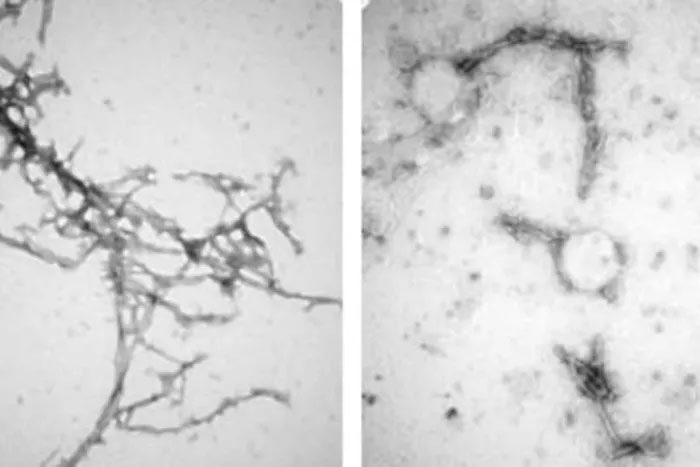Protein aggregates concentrated in the brain are linked to neurodegenerative diseases such as Parkinson’s disease.
Recently identified nanostructures show promise in destabilizing the structure of these aggregates, potentially leading to new treatment methods. This research was published in the journal Nature Communications.

PFFNB2 tightly binds to protein aggregates, effectively breaking them apart.
The central protein in this study is called alpha-synuclein. This protein is believed to play significant roles in the brain. However, it can misfold and aggregate into structures known as Lewy bodies.
These aggregates can disrupt the function of neurons and even begin to kill them. They are also associated with neurological disorders such as Parkinson’s disease.
Most research on Parkinson’s focuses on these Lewy bodies. Studies suggest a “dual life” of the protein, indicating that aggregates can first form in the gut before reaching the brain, or even that it may be an autoimmune disease. Other research groups have targeted Lewy bodies using synthetic enzymes or refined peptides, yielding promising results.
In the new study, scientists from Johns Hopkins Medicine and the University of Michigan in Ann Arbor, USA, explored using nanotechnology to disrupt Lewy bodies.
Nanobodies are smaller versions of antibody proteins used by the immune system to target pathogens. Their smaller size allows them to penetrate brain cell membranes, where they can bind to and disrupt alpha-synuclein aggregates.
Typically, these nanostructures would be broken down inside cells. Therefore, the research team designed them to lack certain chemical bonds that are vulnerable during this process. They found that this approach helped stabilize the nanobodies without reducing their ability to bind to alpha-synuclein aggregates.
After testing seven nanobodies, the researchers identified the PFFNB2 variant as the best candidate. In tests on brain cells and living mouse tissue, PFFNB2 was found to be stable while tightly binding to protein aggregates, effectively breaking them apart.
Ramhari Kumbhar, a co-author of the study, stated: “PFFNB2 prevents alpha-synuclein aggregates from spreading to the mouse cortex, which is responsible for cognition, movement, personality, and other processes.”
Importantly, the research team discovered that the nanobodies specifically target alpha-synuclein aggregates and do not affect individual molecules that perform critical functions in brain cells.
Xiabo Mao, the lead author of the study, noted that nanotechnology could be the key for scientists to investigate neurodegenerative diseases, paving the way for the development of new treatment methods.

















































